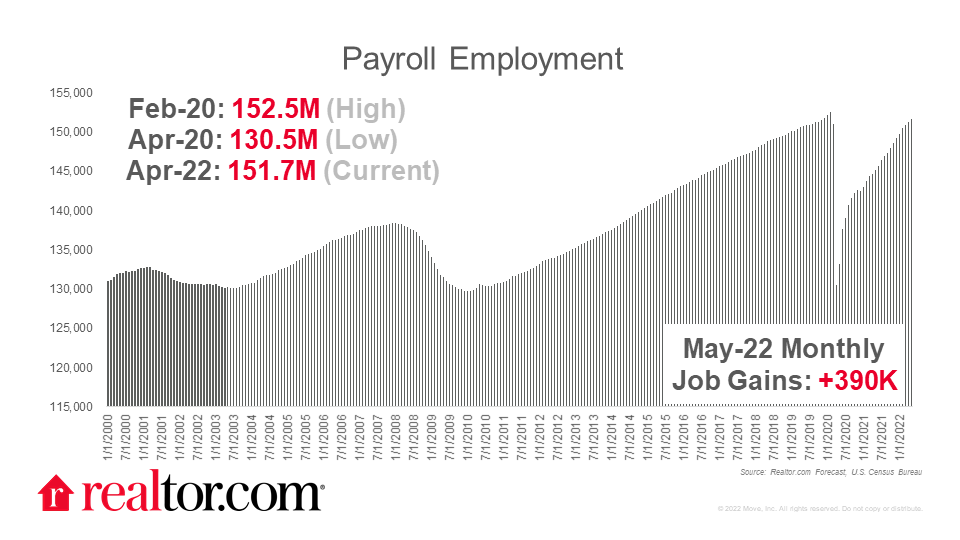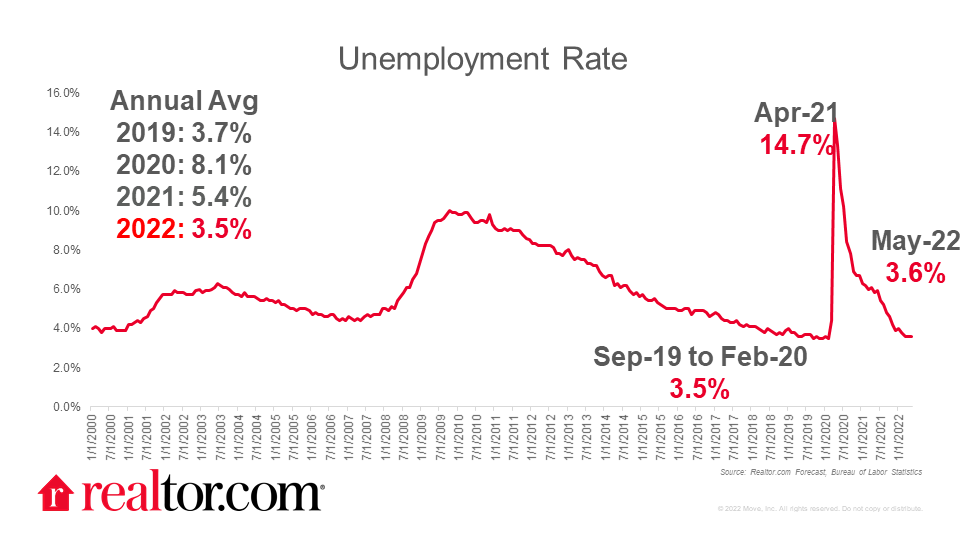What happened in the May employment report?
The labor market recovery continued with a net 390,000 jobs added to payrolls in May as the Fed ratcheted up its monetary normalization, consumer confidence dipped, and inflation remained a top concern. The economy is now just 822,000 jobs or (0.5%) shy of the pre-pandemic high mark, nationwide. At the current pace of hiring, we’ll reach that milestone by August.
The headline unemployment rate held steady at 3.6%, slightly above the long-time low reached a few months before the pandemic began. Based on the latest job openings figures, from April, there were 11.4 million available positions, nearly on par with the March record high and much higher than the number of unemployed persons, which was again just shy of 6 million in May.
May employment gains were led by leisure and hospitality, professional and business services, and transportation and warehousing sectors while the retail sector saw fewer jobs. Despite rising numbers of covid cases in the U.S., the share of employees working remotely because of the pandemic declined to 7.4%, down from 7.7% during April 2022, and well below the 35% who reported doing so in May 2020
Labor markets continue to remain tight as we move toward summer, with more job openings than workers actively searching for a role. Average hourly earnings for private employees reached $31.95 in May, a 5.2% yearly gain. Although wage gains are higher than is historically typical, they are not outpacing recent inflation, so the buying power of today’s earnings is lower.
What does today’s data mean for homebuyers and sellers and the housing market?
The Fed will be armed with this data at its June discussions, scheduled in the next week and a half. Today’s data likely line up with the Fed’s recent expectations. Specifically, the labor market remains strong and can withstand another hike or two of the size the Fed plans to deliver to help bring the Fed Funds rate back to neutral, which will help curtail inflation. For this reason, I don’t expect today’s data to shift investor expectations in a big way. This means, roughly steady to slightly higher mortgage rates ahead, a welcome respite for today’s home shoppers navigating higher home costs due to the combo of generally higher rates and prices.
Because mortgage rates are not expected to meaningfully decline, higher incomes may help shoppers navigate higher housing costs. Additionally, while the median list price hit a new record-high in May, data also show that the number of homes for sale grew for the first time in 3 years as homeowners listed more homes for sale and buyers became more selective amid higher costs. Although the number of homes for sale remains much lower than what was common before the pandemic, this real estate refresh may give buyers some breathing room in a fast-paced market, and ultimately help tame the relentless well-above-average home price growth we’ve seen over the last year.
Subscribe to our mailing list to receive updates on the latest data and research.


